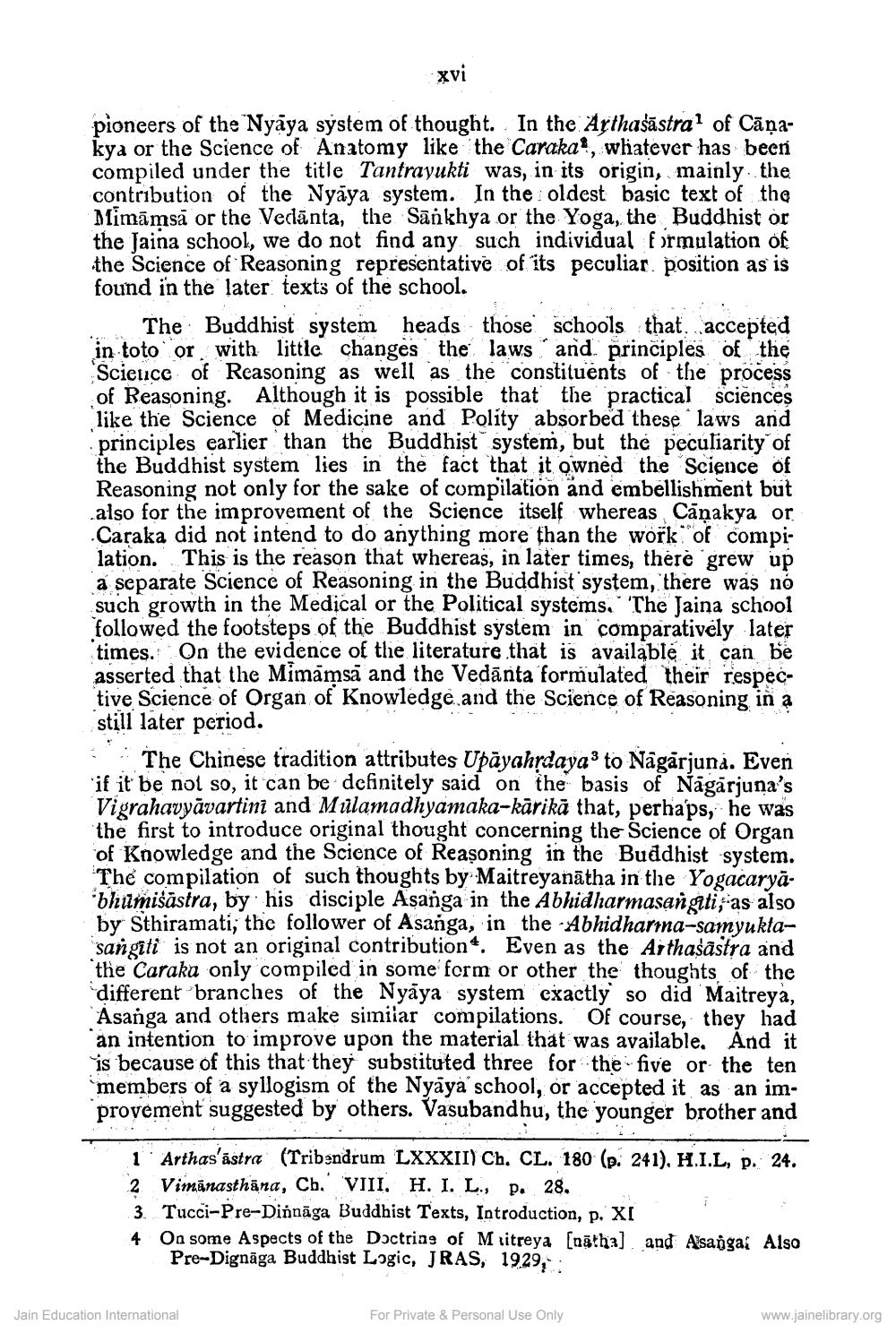________________
Xvi
pioneers of the Nyaya system of thought. In the Arthasāstral of Cāņakya or the Science of Anatomy like the Caraka?, whatever has been compiled under the title Tantrayukti was, in its origin, mainly the contribution of the Nyāya system. In the oldest basic text of the Dimāmsā or the Vedānta, the Sankhya or the Yoga, the Buddhist or the Jaina school, we do not find any such individual formulation of the Science of Reasoning representative of its peculiar position as is found in the later texts of the school.
The Buddhist system heads those schools that accepted in toto or with little changes the laws and principles of the Science of Reasoning as well as the constituents of the process of Reasoning. Although it is possible that the practical sciences like the Science of Medicine and Polity absorbed these laws and principles earlier than the Buddhist system, but the peculiarity of the Buddhist system lies in the fact that it owned the Science of Reasoning not only for the sake of compilation and embellishment but also for the improvement of the Science itself whereas Cāņakya or Caraka did not intend to do anything more than the work of compilation. This is the reason that whereas, in later times, there grew up a separate Science of Reasoning in the Buddhist system, there was no such growth in the Medical or the Political systems. The Jaina school followed the footsteps of the Buddhist system in comparatively later times. On the evidence of the literature that is available it can be asserted that the Mimamsa and the Vedānta formulated their respective Science of Organ of Knowledge and the Science of Reasoning in a still later period. 3. The Chinese tradition attributes Upāyahrdaya3 to Nāgārjuna. Even 'if it be not so, it can be definitely said on the basis of Nagarjuna's Vi ørahavyāvartini and Mulamadhyamaka-kärikä that, perhaps, he was the first to introduce original thought concerning the Science of Organ of Knowledge and the Science of Reasoning in the Buddhist system. The compilation of such thoughts by Maitreyanātha in the Yogacaryā. bhumiśăstra, by his disciple Asanga in the Abhidharmasangiti, as also by Sthiramati, the follower of Asanga, in the Abhidharma-samyuktasangīti is not an original contribution. Even as the Arthasāstra and 'the "Caraka only compiled in some form or other the thoughts of the different branches of the Nyāya system exactly so did Maitreya, Asanga and others make similar compilations. Of course, they had "an intention to improve upon the material that was available. And it is because of this that they substituted three for the five or the ten members of a syllogism of the Nyaya school, or accepted it as an improvement suggested by others. Vasubandhu, the younger brother and
1 Arthas'āstra (Tribendrum LXXXII) Ch. CL. 180 (p. 241), H.I.L, D. 24. 2 Vimānasthāna, Ch.' VIII. H. I. L., p. 28. 3. Tucci-Pre-Dinnāga Buddhist Texts, Introduction, p. XI 4 On some Aspects of the Doctrine of Mitreya [nātha) and Alsaðgaz Also
Pre-Dignāga Buddhist Logic, JRAS, 1929,
Jain Education International
For Private & Personal Use Only
www.jainelibrary.org




